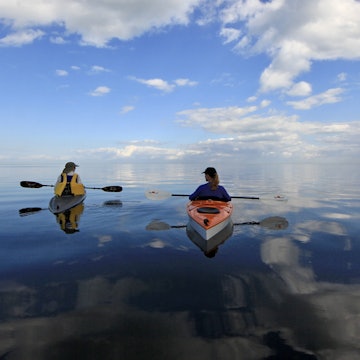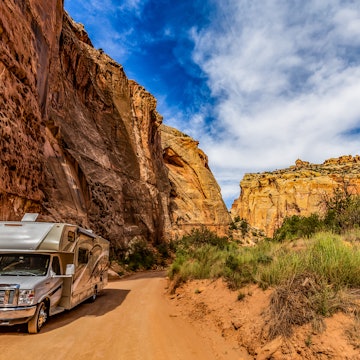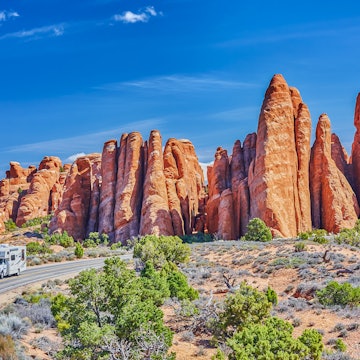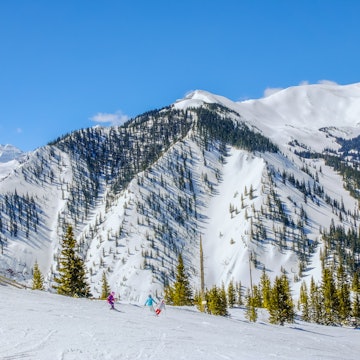

Rio Grande river at Big Bend National Park © Dmitry Shlepkin / Shutterstock
When we think of exploring the great outdoors in the US, we automatically gravitate towards the national and state parks – these public lands have long served as the backbone of the country’s environmental preservation system.
Within many of these parks (and sometimes outside of them) exists a network of mighty waterways that hold their own prized designation: National Wild and Scenic Rivers. These rivers are recognized for their unique riparian ecosystems and for their essential roles in nourishing the environments around them. Here’s our guide to exploring some of the nation’s most breathtaking waters.
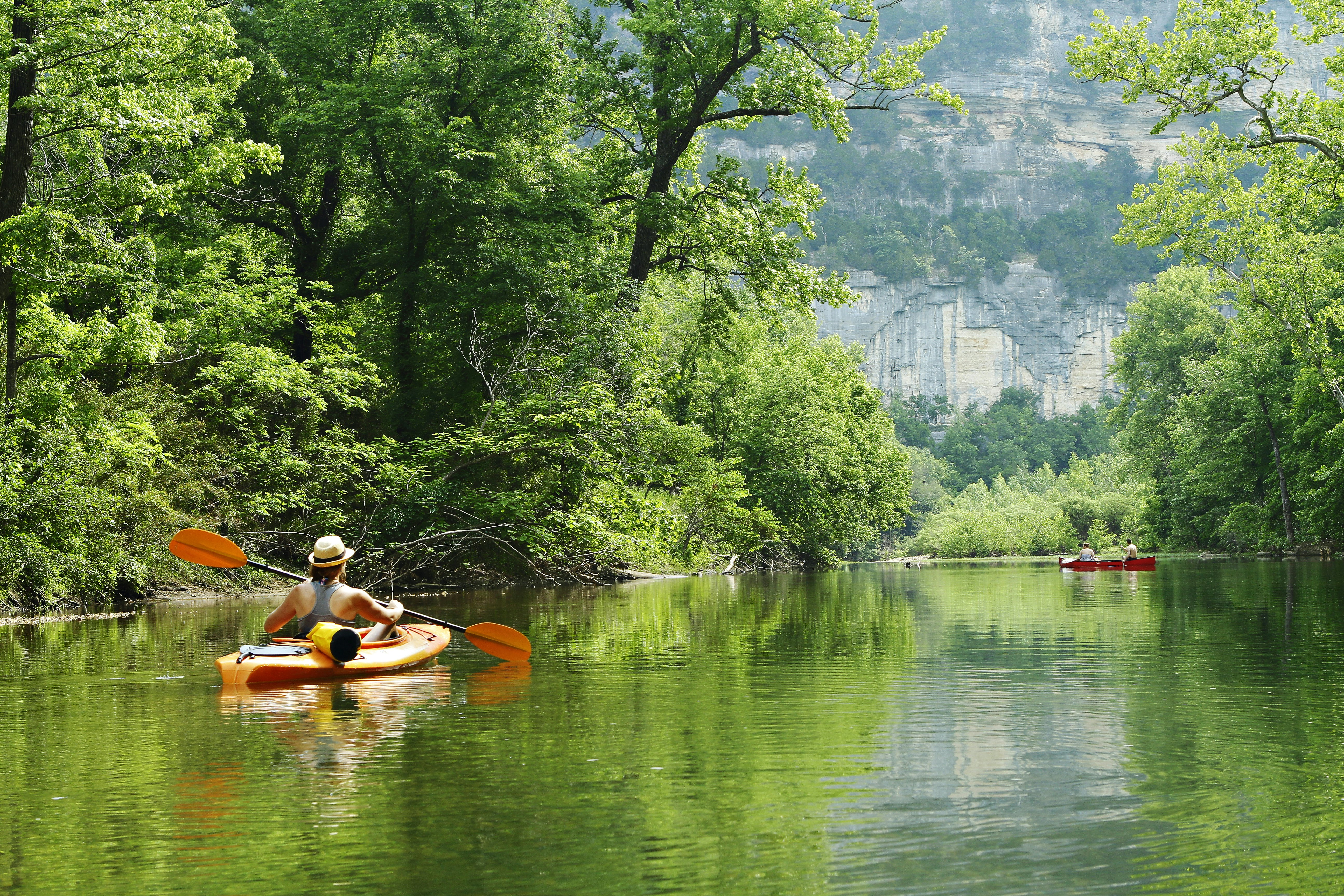
Buffalo National River, Arkansas
The Buffalo was the first river in the country to receive the designation of National River, and its 135 miles make up one of the last undammed river systems in the lower 48 states. The river runs through prime Ozark country, and across what was historically Osage land. After occupation by European settlers, the region around the Buffalo became a hub for homesteaders, miners and timber companies, later serving as the staging ground for guerilla skirmishes during the Civil War.
Ecologically, the river is framed by towering bluffs of dolomite and limestone, and it cuts through three wilderness areas best explored via the intricate trail system and river floats. The Buffalo itself is divided into three districts (Upper, Middle and Lower), each with their own personalities; check rainfall amounts before your visit to make sure you know what conditions to expect.
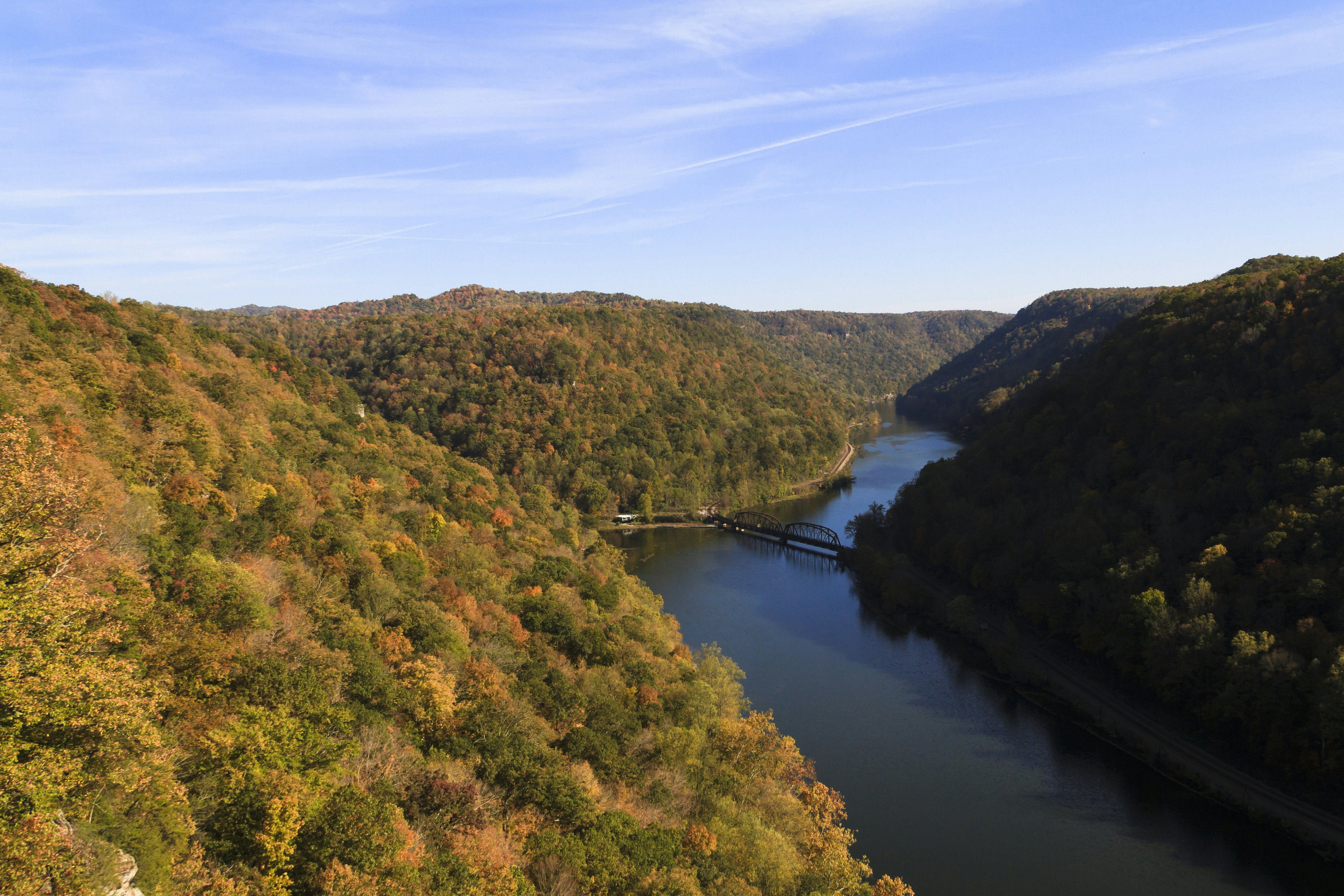
New River Gorge National River, West Virginia
West Virginia is renowned for its striking mountainscape, but it’s also home to one of the most legendary white water rivers in the country, perennially popular with kayakers, rafters, and paddleboard enthusiasts. The river, and the gorge it's carved out of Nuttall sandstone and shale, is the stunning centerpiece of one of the eastern USA's best outdoor destinations, rife with opportunities for hiking, climbing and, of course, water sports.
Despite its ironic name, the New River has an ancient origin story that reaches back to the formation of the Appalachian mountains; it’s thought to be one of the oldest rivers in the world. Its ecological stability has allowed coastal species to mingle with northern mountain species, forming a rare biosphere that continues to evolve. The New River Gorge existed under Iroquois, Cherokee and Shawnee control at different points in time, and with the arrival of European colonizers, the area became a hub for the mining and timber industries before the New River was protected in 1978.
Today, the river’s crisscrossing of the mountain ridges creates impressive rapid conditions, and adrenaline seekers will find no shortage of white water to enjoy. The New River also connects with the Gauley River, another behemoth in the rafting and kayaking scene.

Klamath Wild and Scenic River, Oregon/California
The Pacific Northwest has long beguiled people with its fairy-tale landscapes, and the Klamath River is no exception; this wildly biodiverse waterway winds through several national forests and wilderness areas, delivering an aquatic experience only this part of the country can offer.
The area has been significant to Native American groups for thousands of years. In Oregon, it is considered sacred by both the Shasta and Klamath Nations; the California sections of the river are managed by the Karuk Tribe of California, the Yurok Tribe and Hoopa Valley Tribe, in conjunction with the US Forest Service and the Bureau of Land Management. As Anglo-Americans moved west, they were similarly drawn to the river’s bounty.
This river is one of only three that bisect the Cascade range, and it flows all the way to the Pacific Ocean. While anyone would enjoy rafting down its waters or exploring its shores, anglers will find particular joy in their visits, as the river is well known for its large salmon and steelhead populations; fly-fishing is the name of the game. Make sure you’ve got a fishing permit and familiarize yourself with fishing seasons before you go.
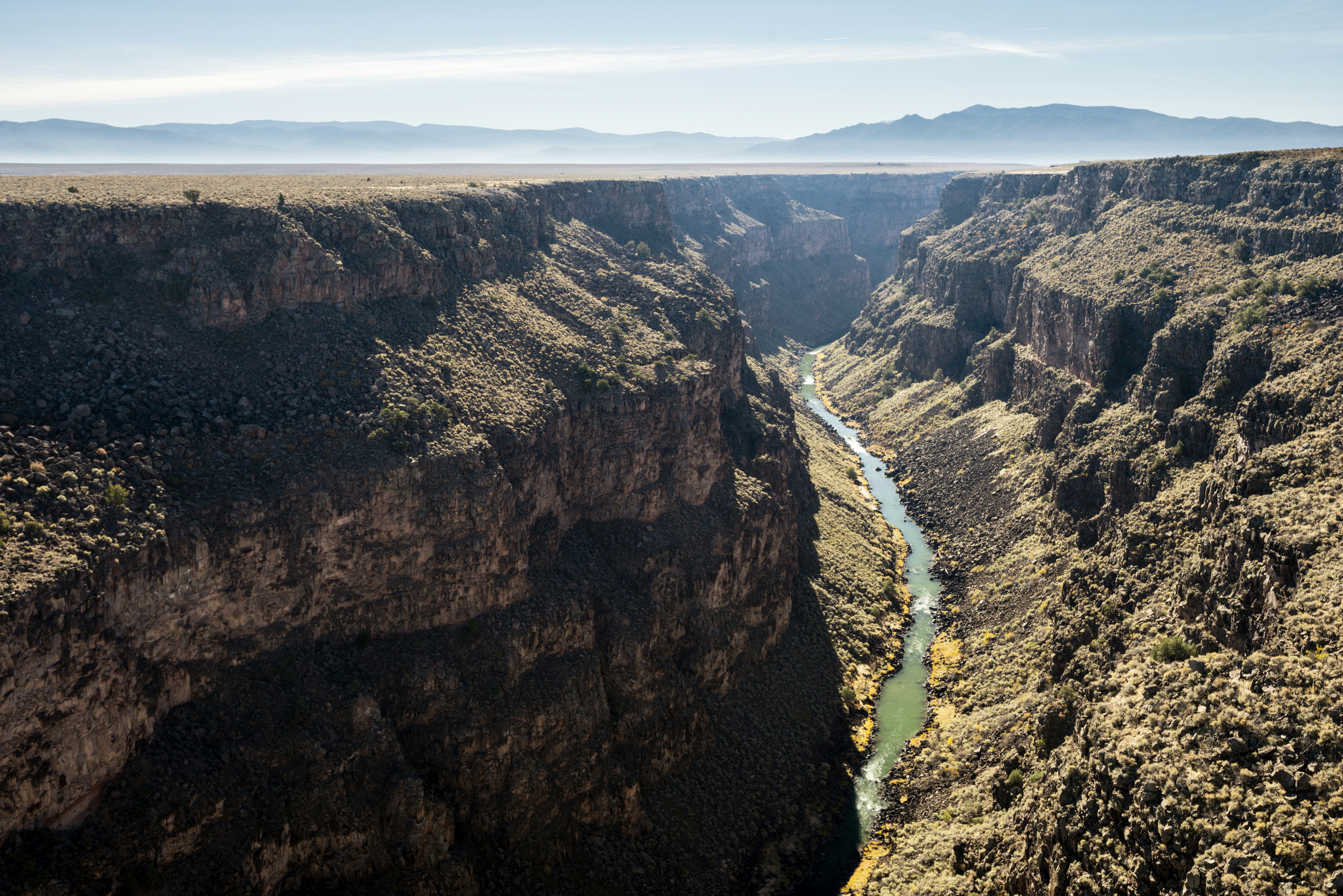
Rio Grande Wild and Scenic River, Texas
The Rio Grande cuts through 100 million years of bedrock to form one of the most rugged riparian environments in the country. At the centerpiece of Big Bend National Park, the river is flanked by sheer canyon walls and hot springs, and the water provides a unique corridor through the geological and ecological history of the Chihuahuan desert.
The Big Bend section of the Rio Grande was first populated by several different Native American groups including the Chiso, Jumano and, after the arrival of the Spanish conquistadors, the Comanche. The area was part of border disputes between the US and Mexico, and has hosted both Mexican and Anglo-American farmers and homesteaders over time.
Those looking to escape the desert heat will find floating options in Mariscal Canyon, Boquillas Canyon and the Lower Canyons; each offers unique experiences for a variety of skill levels, and if you feel like you really want to commit, you can even go on a 10-day float trip. Overnighting by the river will yield some of the best stargazing in the US – once the sun goes down, Big Bend is considered the darkest national park in the lower 48 states.
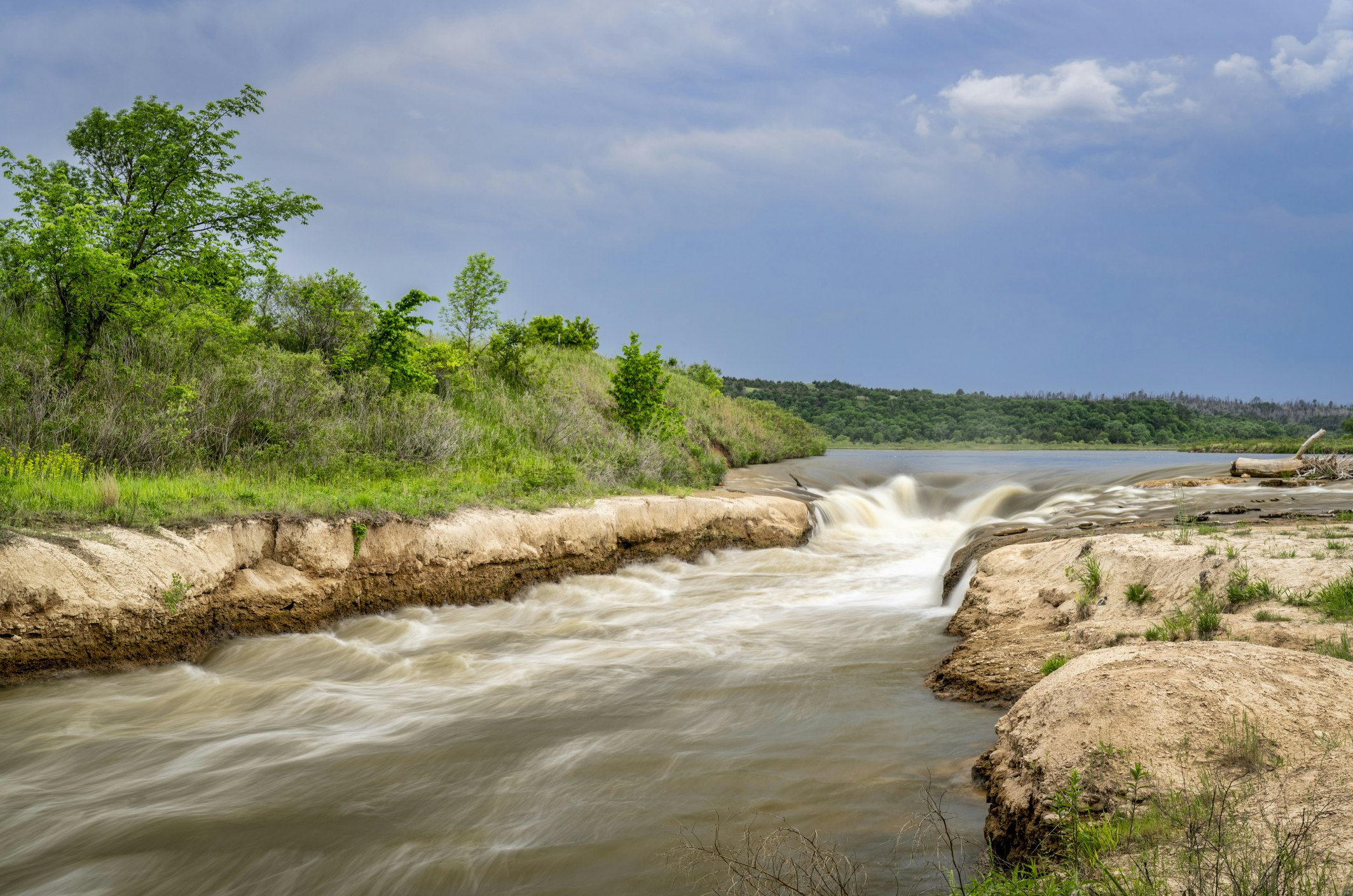
Niobrara National Scenic River, Nebraska
The Niobrara River stretches through northern Nebraska, creating a fascinating oasis among the state’s hills. Sandhills and sandstone rock formations? Check. A boat load of fossils? Check. Waterfalls? Check. Located on Ponca land, the river was historically a fertile hunting ground for bison and other game, and it was later taken by Anglo-American homesteaders and cattle raisers.
The river cuts through six ecosystems, including three types of prairies and three forests. The most common way to enjoy the Niobrara is with a float down its mostly gentle waters – canoers in the know also consistently rate the Niobrara amongst the best in the country. If you're hoping to yakpack the 76 miles of the Niobrara preserved as an NSR, camping is available through private outfitters or in the Smith Falls State Park. Avoid visiting on Saturdays if you’re looking to remain socially distanced.
You may also like:
10 unforgettable experiences in US national parks
7 reasons to visit Augusta, Georgia
The weird and wild outdoors of southern New Mexico
Oregon's secret surprises
Get more travel inspiration, tips and exclusive offers sent straight to your inbox with our weekly newsletter.











